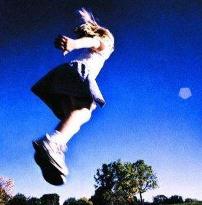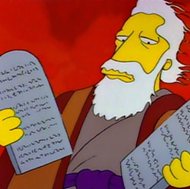[In this post I rely heavily on the book by Robert Bird that I mentioned at the end of my last post, as well as on another excellent book by Bird, titled Andrei Tarkovsky : Elements of Cinema.]
Given that film production in the former Soviet Union was tightly controlled by the state, and that religion was seen by the state as, at best, an anachronism to be outgrown, it would seem improbable that a Soviet filmmaker would be allowed to make a movie about Andrei Rublev. But after World War II, Soviet authorities began to appropriate various figures safely in the Russian past – even religious ones – if they could be presented as patriotic heroes who helped to create a unified Russian state. Under this rubric Andrei Rublev was lauded as an artist in the USSR during the 1950s, and the 600th anniversary of his presumed birthdate was observed with exhibitions and publications.
Soon after one of these exhibitions in 1960, Andrei Tarkovsky, who had just graduated from VGIK (the Moscow film institute), was walking in a park with two friends: Vasily Livanov (an actor) and Andrei Mikhalkov-Konchalovsky (a student at VGIK). Livanov shared with the others his idea to make a film about Andrei Rublev, and his desire to play the leading role. But Livanov was occupied at the time with other projects – he would later become famous for playing Sherlock Holmes in Soviet films – and he ended up not contributing further. Tarkovsky and Konchalovsky, however, quickly reached a deal with Mosfilm Studios to write a screenplay for a Rublev film. The two of them worked on the screenplay off and on for the next two years (with a break while they both worked on Tarkovsky’s first feature-length film, Ivan’s Childhood) before submitting it to Mosfilm at the end of 1962.
But Mosfilm didn’t approve the screenplay, at least not right away. A fine line had to be walked. Rublev’s stature as an artist notwithstanding, a film about an Orthodox monk was always going to be a delicate proposition in the officially atheist Soviet Union. It all depended on how Rublev would be portrayed in the film – preferably, as far as the state was concerned, as a patriotic, proto-socialist hero of the Russian people suffering under Mongol oppression. Tarkovsky (whose film, Ivan’s Childhood, had by now won prestigious international awards and earned critical acclaim) had little interest in patriotic myth-making, but he cannily talked up, in interviews and articles, those aspects of the project which he knew would appeal to those who did. In particular, he stressed the importance of a scene depicting the Battle of Kulikovo Field (a decisive defeat for the Golden Horde in 1380 that heralded the eventual overthrow of the Mongol yoke and the emergence of a unified Russian nation).
Tarkovsky and Konchalovsky continued to revise their screenplay during 1963, and Mosfilm, after consulting with officials at the highest levels of the Communist Party, finally approved it at the end of 1963. The screenplay was published in the influential film journal Iskusstvo kino in the spring of 1964, at the behest of a sympathetic Party official, and approval for the film’s production, with a budget of 1,000,000 rubles, followed in the summer of that same year. It had taken nearly four years of hard work, politicking and wrangling, but the production of this unlikely film could finally proceed (although there would be additional, and even more severe, hurdles to clear later, as we shall see). In the process, Tarkovsky had shown himself to be, in the words of Robert Bird, “a consummate man of the system,” i.e. the Soviet film system, and someone who “functioned as a full member of the cinema establishment.” Buoyed by the success of Ivan’s Childhood, Tarkovsky was seen by his peers, both inside and outside the Soviet Union, as the most talented and promising young film director in the country. And his latest project was generating a lot of excitement and anticipation.
The filming for Andrei Rublev commenced in April of 1965 and continued until November of that year, at which time it was interrupted by heavy snowfall (most of the filming was done on location). Shooting resumed, and was completed, in the spring of 1966. The budget was overrun by 300,000 rubles, but even at that, Tarkovsky had been forced, because of cost, to remove a number of scenes that had been in the screenplay, including the Battle of Kulikovo Field. Tarkovsky’s attention to detail was legendary, and his dedication while working on a film was total. He expected, and almost without exception got, the very best from his collaborators. Actor Anatoly Solonitsyn, who played Andrei Rublev, was virtually unknown at the time Tarkovsky chose him for the role – they would also work together on Tarkovsky’s next three films. Actor Nikolai Grinko, whom Tarkovsky would use in all five of the feature-length films he made in the Soviet Union, recalled that Tarkovsky always fondly remembered the closeness of the collaboration on Andrei Rublev. “We lived as a single family,” Grinko said. Actor Rolan Bykov stated that Tarkovsky “always knew precisely what he wanted . . . But he also valued others’ ideas, treated them lovingly and attentively, and believed in them.”
On the other hand, friction developed between Tarkovsky and Konchalovsky over the course of Andrei Rublev’s production and, according to Bird, it probably started even before that. Konchalovsky, who would go on to become a successful director in his own right, was developing his own ideas about film narrative – which is to say, first of all, that he valued it, whereas, in his opinion, Tarkovsky didn’t. Konchalovsky would later recall that Tarkovsky had once said, “I want that sense of fresh leaves opening up,” about which Konchalovsky would later complain, “For him sensations replaced dramaturgy.” According to Konchalovsky, it was his own more logical approach that prevented the two of them from collaborating on Tarkovsky’s next film, Solaris: “After all I had learnt some lessons from Rublev and was interested in the structure of the work, whereas he wanted to destroy the structure. He was obsessed with this goal.”
“Tarkovsky’s tendency to obscure narrative connections and stress non-narrative visual motifs and images,” as Bird puts it, was unquestionably true. And it cannot be denied that “faced at every step with the need to shorten the film, Tarkovsky consciously chose to ‘violate its intellectual integrity’ for the sake of its ‘plastic integrity,'” or that he “intentionally de-intellectualised key images,” or that Tarkovsky himself once said, “the screenplay dies in the film.” But Tarkovsky said and did these things not because he valorized incoherence; he simply had different ideas about film narrative than Konchalovsky did. As Bird notes:
The idea of a qualitatively different kind of cinema plot appeared as early as 1913 in a private letter of the young Boris Pasternak, who remarked: ‘cinema perverts the core of the drama because it is called upon to express what is true in it, its surrounding plasma. Let it photograph not tales, but the atmospheres of tales.’
I don’t know whether Tarkovsky was familiar with this remark by Pasternak, but I’m sure he would have agreed with it. I think he would also have agreed with Bird’s observation that the best of the early Soviet films, such as Dovzhenko’s Earth (incidentally, one of Tarkovsky’s favorite films), “shifted the centre of the film’s meaningfulness from the story to the viewer’s creative reconstruction of it.” I concur with this statement by Bird, pace Konchalovsky:
Tarkovsky’s cinema is authentic not because of what it represents, but because of what it enables in the viewer as a project. . . . Tarkovsky ‘silences story so that we can happen.’ [Bird cites poet Robert Kelly for the latter phrase.]
[… to be continued …]





Thank you for this article. Andrei Rublev is my favorite film of all time. I always felt, however, that I should be able to follow the plot better, that I somehow just needed to pay closer attention and it would make better sense. Now I realize that I have been appreciating, at least in part, what Tarkovsky wanted his audience to appreciate. Thanks again. You took the pressure off!